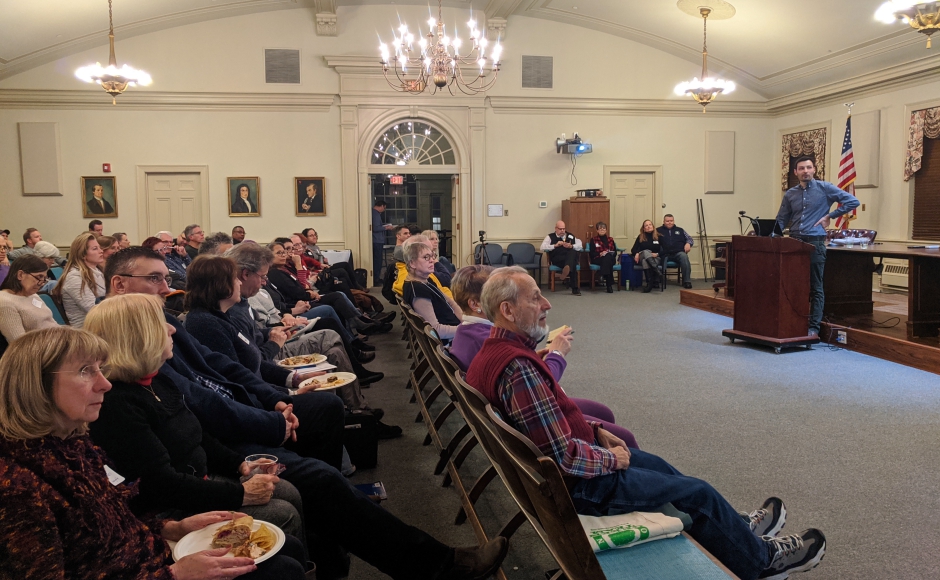People 
Haddonfield Skirmish Renews Relevance of Local History
The annual colonial-era re-enactment brings together fans of history, drama, and local culture for a high-energy pitched battle on Kings Highway. After 11 years, it hasn’t lost its impact. Sign in or subscribe to continue reading…
June 17, 2025
People 
‘No Kings’ Rally Draws Thousands to Haddon Avenue
Residents from throughout South Jersey converged on Haddon Avenue, walking the mile-and-a-half between PATCO stations in Haddon Township and Collingswood to participate in nationwide protests against the policies of the Trump administration. Sign in or subscribe to continue reading...
June 15, 2025
 Zenon Tech-Czarny addresses the 2020 Tri-County Energy Efficiency and Sustainability Summit. Credit: Matt Skoufalos.
Zenon Tech-Czarny addresses the 2020 Tri-County Energy Efficiency and Sustainability Summit. Credit: Matt Skoufalos. Zenon Tech-Czarny addresses the 2020 Tri-County Energy Efficiency and Sustainability Summit. Credit: Matt Skoufalos.
Zenon Tech-Czarny addresses the 2020 Tri-County Energy Efficiency and Sustainability Summit. Credit: Matt Skoufalos. Zenon Tech-Czarny addresses the 2020 Tri-County Energy Efficiency and Sustainability Summit. Credit: Matt Skoufalos.
Zenon Tech-Czarny addresses the 2020 Tri-County Energy Efficiency and Sustainability Summit. Credit: Matt Skoufalos.